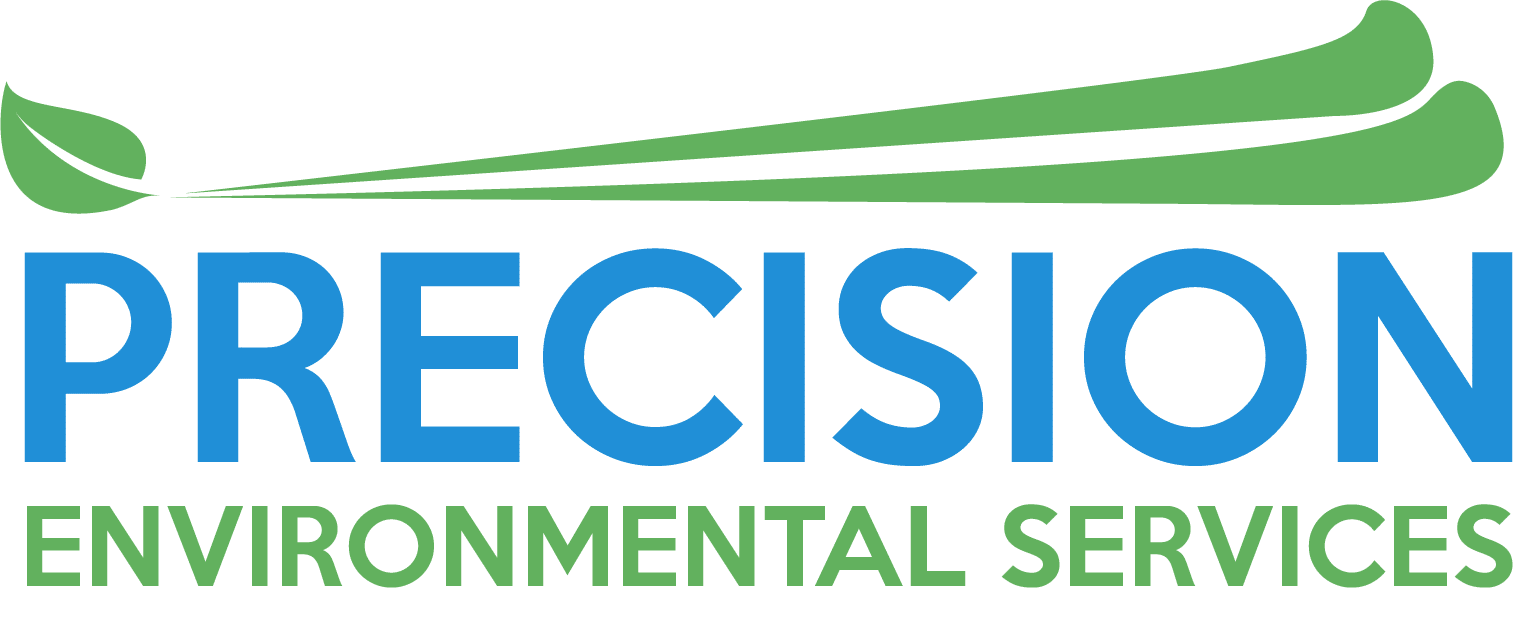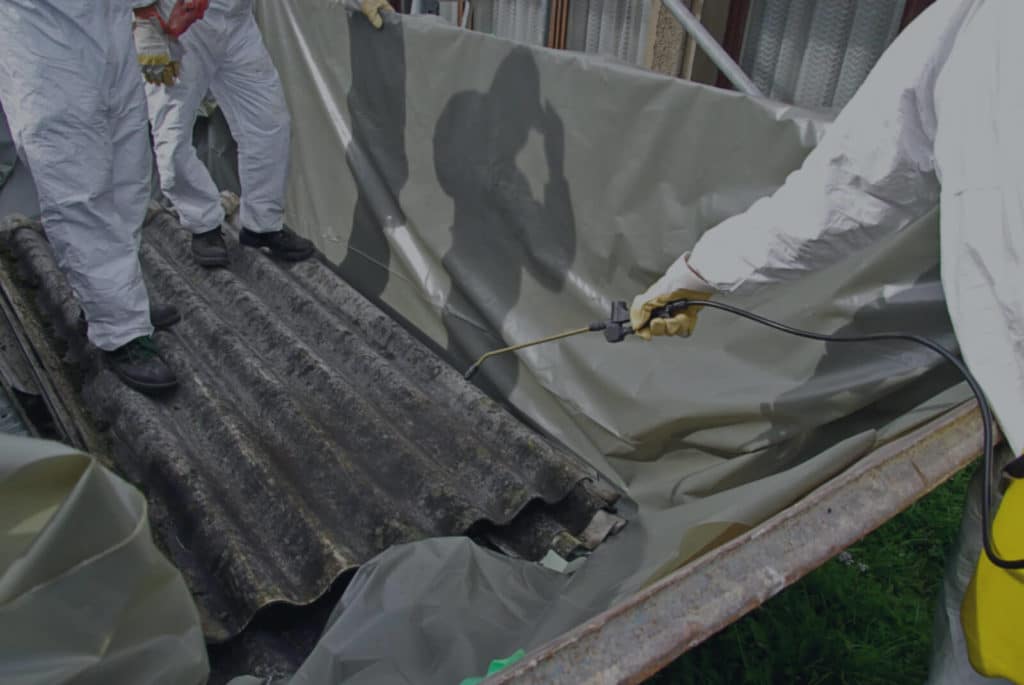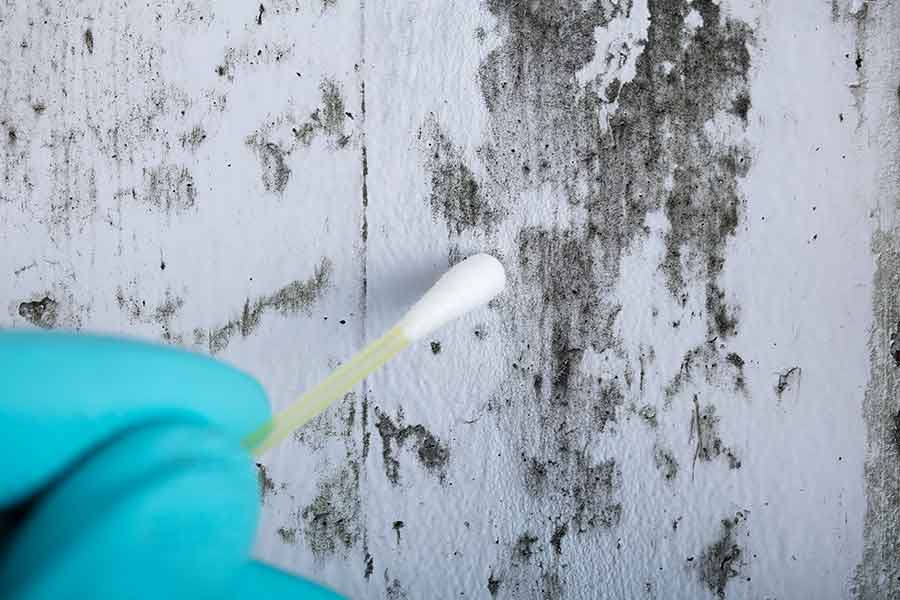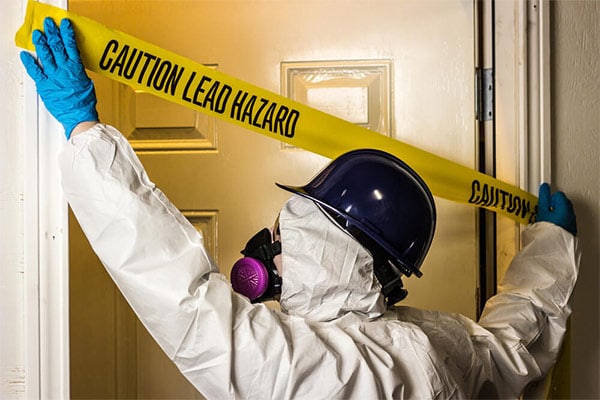Precision Environmental Service-Flower Mound-TX
Get Estimate
DFW Environmental Management Services
With over a decade of experience, Precision Environmental Services is committed to providing our clients with a safe and healthy environment. We pride ourselves in delivering sound environmental consulting (including air monitoring and asbestos surveys) to ensure that regulatory compliance is maintained and that our clients are left with the ability to make informed decisions. Precision has an established reputation of providing professional services on time and within budget.
Our promise to provide fast and quality services with competitive pricing has created lifetime relationships with our existing clients. We look forward to meeting all your project goals and deadlines.
Our History
With over two decades of experience, Precision Environmental Services is committed to providing our clients with a safe and healthy environment. We pride ourselves in delivering sound environmental consulting services to ensure that regulatory compliance is maintained and that our clients are left with the ability to make informed decisions. Precision has an established reputation of providing professional services on time and within budget.
Why Us?
Our promise to provide fast and quality services with competitive pricing has created lifetime relationships with our existing clients. We look forward to meeting all your project goals and deadlines.
Our Services
Asbestos Services
Asbestos Inspection
Asbestos professionals are trained in how to inspect for asbestos and in the handling, asbestos containing materials. The type of asbestos professional will depend upon the type of item being checked and what requires to be done to fix the asbestos problem. You might work with a general asbestos professional or, in many cases, an expert trained to handle particular items containing asbestos.
Asbestos professionals such as Precision Environmental Service can conduct evaluations, take samples of presumed product, examine its condition, and recommend on the corrections that are needed, in addition to who is certified to make these corrections. Once again, material in good condition need not be tested unless it is likely to be disturbed. Professional correction or abatement professionals repair and eliminate asbestos materials.
Asbestos inspections are an often-overlooked step that is essential to keep you both safe and in compliance with state law. You need an asbestos inspection before you start any demolition or renovation task on your house or commercial property. Renovation & demolition jobs fall into the classification of activities that would disrupt asbestos containing material, so an inspection must be finished prior to starting. This guideline is imposed on the local level, with municipalities needing the asbestos inspection prior to releasing a demolition or renovation authorization.
The evaluation should be performed by an accredited inspector and include a report that recognizes all asbestos containing materials in the facility that might be disrupted by the demolition or renovation.
If you have any extra concern about asbestos inspections or testing? Contact the specialists at Precision Environmental Services.
Read more about Asbestos Services
Asbestos Survey
Asbestos testing, likewise called an asbestos survey, can assist ensure that you and the residents of your structures stay safe from this quiet killer.
The US EPA requires that an asbestos survey be carried out prior to demolition or renovation to identify whether asbestos is present in materials that will be interrupted. We also suggest both an asbestos inspection and air testing in older buildings where asbestos materials may have ended up being damaged due to age, in addition to after any asbestos material removal or repair work, to guarantee no asbestos fibers have gotten in the air.
The EPA and NESHAP require that you carry out a survey to figure out the existence of asbestos in a public structure before doing a renovation or demolition. You should likewise alert the Texas Department of State Health Services before you begin a task.
At Precision Environmental Service we supply Texas Department of State Health Service (TDSHS) certified asbestos surveys. We offer asbestos survey & testing services in around the DFW and North Central Texas. We perform asbestos surveys needed to get a building permits in Texas. We also assist our customers examine the outcomes obtained from assessments and use cost effective alternatives to assure compliance with State and Federal Regulations concerning asbestos.
Asbestos Remediation
There is a long history of asbestos use in Texas, particularly in the commercial centers of Dallas and other big cities. This suggests that old structures, decommissioned shipyards, and manufacturing plants still have a considerable amount of the fiber. When old structures are refurbished, these fibers can discover their way into the lungs of workers.
Expert asbestos remediation and abatement demands attention-to-detail and an experienced staff. You will discover both at Precision Environmental Service, and we are committed to using the industry’s finest and most efficient innovation to get your job completed swiftly and thoroughly so you will not need to worry about future issues.
We are trained in Texas state compliance regulations and security requirements to guarantee your property fulfills all your legal and health requirements. The professionals at Precision Environmental Service have actually already consulted on countless residential and business homes throughout the state of Texas, which has offered us a local reputation for responsive service and shown results across the neighborhood. The federal government, resolving the state and federal OSHA has formulated appropriate Texas asbestos abatement treatment that provides for the security of workers that carry out asbestos abatement. There are likewise standardized procedures for handling the elimination of asbestos containing materials.
Asbestos Air Quality Testing
Asbestos is harmless as long as it remains inside the materials it is utilized in. When those materials fall apart due to age or are disturbed in the course of remodellings or demolition, the fibers can enter the air and become a serious health hazard.
There are 2 types of asbestos air tests presently available:
– Phase contrast microscopy (PCM).
– Transmission electron microscopy (TEM).
While both are trustworthy, TEM is more accurate due to the size of fibers it is capable of finding.
With PCM, we utilize a pump to draw an air sample through a filter, then we take a slice of the filter and examine it under a microscope for evidence of fibers. The procedure is quick and inexpensive, and will determine fibers in the air, but might miss out on the presence of very little fibers. PCM can not compare asbestos fibers and other fibers, such as fiberglass. You can figure out if there are no fibers, but if you determine fibers on the filter you can not state for specific they are asbestos.
With TEM, we send out air samples to a laboratory where the air sample is bombarded with electrons inside a huge electron microscopic lense. This enables the lab technician to distinguish between asbestos and non-asbestos fibers at a very fine level of detail. It detects the existence of even tiny fibers, however it is more expensive and takes longer than PCM.
On lots of asbestos removal jobs, PCM is frequently picked for its speed and cost-effectiveness, while TEM is best when a high degree of self-confidence in the outcomes is preferred. We typically recommend utilizing TEM at the end of an asbestos removal job prior to re-occupancy of the location.
Mold Services
Mold Inspections
Mold inspection vs. mold testing
Mold inspection simply recognizes the existence of mold and generally defines the size of the issue, typically in square video footage.
Mold testing tries to recognize what particular kind of mold is in your home and how many mold spores are in the air.
Keep in mind the following:
- The carefully regulated conditions required to carry out a correct scientific test of mold are very challenging to achieve in a house, so outcomes will frequently vary from test to test, despite removal efforts.
- Second, all indoor spaces have mold spores that drift in from outdoors, so mold tests will generally offer a long list of types, the majority of which are not actually growing in your house.
- Third, the EPA has actually set no standards for an acceptable quantity of mold or mold spores in a house.
Read more about Mold Services
Where is Mold discovered in the home?
Mold can be found in several areas in the house environment. It appears most often in moist areas as little black circles or thread-like whit objects. It is normally accompanied with a musty-type smell. Outdoors, mold plays a natural part in the environment by breaking down dead organic matter such as dead trees or fallen leaves. Mold replicates by means of microscopic spores: the spores are undetectable to the naked eye and float through the indoor and outdoor air. Mold begins to grow inside your home when mold spores arrive on surfaces that are wet or damp. Mold will not grow without water or moisture. It is important to dry water-damaged locations, and products within 24-48 hours to prevent mold growth.
If there is any visible mold growth, moldy odors, visible water damage or spots, inadequately kept HVAC systems or building defects. By combining a visual inspection with air, tape or swab tasting, the inspector can assist recognize the concealed source of mold, irritants and indoor toxins and the level of any severe or chronic water or moisture damage.
Air sampling: The function of air sampling is to figure out the type and quantity of air-borne contamination in a building. Air sampling might be necessary if the presence of mold, allergens or contaminants is presumed (e.g., moldy smells, allergic reactions) however can not be determined by visual inspection. When air sampling is performed, both the indoor and outdoor air are sampled, so the outcomes can be compared to see if an issue exists. Normally, the indoor sample is taken while the heating and/or a/c unit is running; this will make sure the interior air is efficiently checked.
Tape/Swab sampling: Tape/Swab samples are normally gathered from visible musty surfaces by clean the location with a sterile swab. This type of sampling is used to recognize particular mold types.
Suggestions and lab results: Once the house has a visual inspection and the mold scenario evaluated, action can be prepared to clean it up and avoid future contamination. Based upon site evaluations and sampling lab analysis results, your inspector can provide a detailed written report that can be utilized for disclosure and referrals. In all circumstances, if mold exists, the underlying cause of the water damage should be fixed.
Mold Assessments
When evaluating the indoor air quality of an environment, you need to consider the occupants or proposed residents and their individual level of sensitivity with respect to indoor environmental contaminants. However, in the lack of State and Federal exposure limits for mold in indoor environments, numerous current market guidelines exist that we believe properly attend to the air quality of an indoor environment.
Throughout all mold assessments, Precision Environmental Service follows the standards and suggestions supplied by the Texas Department of State Health Services (DSHS), the Environmental Protection Agency (EPA), and the Texas Guidelines for Assessment and Remediation of Fungi in Indoor Environments.
Mold testing and a mold inspection can answer your concerns. A certified mold inspector knows that mold creates the most typical indoor air quality complaints, from the smell of “mildew” to the unfavorable health effects of fungal spores. For a lot of house owners and house buyers, the principle ecological concern is mold.
Mold Remediation
A major mold infestation of black mold can ruin your home– and your health! Considering that tiny mold spores exist naturally practically everywhere, inside, and outdoors, eliminating all mold from a home or service is difficult.
Remediation will always involve tidying up existing mold while preventing direct exposure to oneself along with property owners, in addition to avoiding new development by addressing the wetness source.
Besides causing a significant service interruption, a mold problem can provide a severe health threat for people exposed at your commercial property. Mold invasions can be brought on by small water invasions, like a sluggish roofing system leakage or loose pipes fitting. Every hour invested cleaning up is an hour of lost profits and productivity. If you suspect your property has a mold problem, call Precision Environmental Service, who will respond quickly and work quickly to manage the circumstance.
Mold remediation techniques have actually been developed from the work practices used in asbestos abatement. These practices work well for containing airborne mold that is aerosolized during demolition and for the protection of workers performing the remediation. The greatest difference in between mold and asbestos abatement is that, unlike asbestos in work, water should not be utilized in mold work to control airborne particle.
The assessment of the extent of mold and the advancement of mold remediation plans need to usually be done by experienced experts. The mold remediation must then be done by skilled and certified mold remediation experts.
Mold Air Quality Tests
Taking air samples during a mold inspection is essential for numerous factors. Mold spores are not noticeable to the naked eye, and the types of mold present can frequently be determined through laboratory analysis of the air samples. Having actually samples evaluated can likewise help supply proof of the scope and intensity of a mold problem, along with aid in evaluating human exposure to mold spores. After remediation, new samples are generally taken to help ensure that all mold has been successfully removed.
Air samples can be used to gather information about mold spores present in the interior of a house. These samples are taken by utilizing a pump that requires air through a collection device which catches mold spores. The new air sample is then sent to a lab to be analyzed. Precision Environmental Service inspectors who perform mold inspections typically make use of air sampling to collect information, which has actually ended up being commonplace.
Infrared Thermography
Mold can cause many health problems. These include allergic reactions and poisonous effects due to mycotoxins. Because of these possible issues it is really important to be able to detect mold in a home. One technique that can be utilized to detect mold in a home is by using infrared thermography.
By utilizing an infrared camera that produces pictures of heat radiation, a service technician can find the existence of moisture inside of walls that can not be seen by the human eye. Moisture and similar conditions can promote mold growth.
Read more about Infrared Thermography
Mold associated problems can be found by the cam before there are indications that show up or noticeable by an individual other senses such as smell. But the infrared camera is ineffective by itself. A technician also needs to have temperature measurements to make a notified choice about the possible mold growth. To fix this, they use cams that can take accurate temperature measurements. By comparing the temperature measurements with infrared readings of similar structures in the location, a service technician can choose if a significant temperature rise will encourage mold growth.
When a service technician finds a location of thought mold growth, the camera is an important tool for documenting the information. This will help a person who is not knowledgeable about what mold looks like or can do comprehend the nature of the problem within the house that they are inspecting. This info can be used in the decision-making procedure for a home purchaser or a person offering the home. As soon as the details is recorded, the seller will need to disclose that information to any other prospective buyers.
A house purchaser can learn how large the issue is within your house they are looking at and base their purchase decision on this information. There are other ways to detect mold in a home. One method is through strength. An individual can eliminate the drywall and inspect it visually. This is not very accurate as the conditions that can produce mold growth are not always able to be seen by the naked eye. It is also expensive since whatever is removed will need to be changed. Unless an individual already intends on taking apart all the drywall in a house, this approach is not a reliable method to examine for mold.
Moisture Mapping
The majority of home and entrepreneur choose not to have mold growing in their buildings. But really few actively look for mold up until it is far too late, and the mold has begun to actively display its most common symptoms: moldy odors and staining of building materials.
Mold in structures can be problematic for many factors:
- They produce musty, undesirable odors.
- Mold growth can deteriorate walls, floorings, ceilings, and structure frames, increasing the risk of abrupt disastrous failure; and.
- Some types of mold can launch poisonous spores that create respiratory problems for building residents.
Read more about Moisture Mapping
Having the ability to detect mold risks before they become major issues is extremely important for the security of any structure. The trouble is that the standard indications of mold growth– stained walls/ceilings and musty smells– are typically only obvious after the mold has actually had enough time to actually settle in.
When it pertains to determining mold danger, moisture meters are among the most useful and essential tools a mold remediation expert can have to do moisture mapping. Why? Because, as kept in mind by the EPA, “there is no practical way to get rid of all mold and mold spores in the indoor environment; the way to control indoor mold growth is to control wetness.”.
Mold spores are virtually all over and will grow rapidly once they accomplish the perfect conditions. So, to prevent mold growth, it is very important to find areas that may provide mold the perfect conditions it needs to grow and eliminate them. This is where moisture meters come in.
The moisture mapping tools utilized today for discovering wetness are incredibly precise pieces of innovation that can identify pockets of wetness concealed within surfaces. Discovering this wetness within home walls and flooring can suggest areas where corrosion and mold risks might exist. In the eradication of mold and dangerous fungi, a thorough assessment is essential.
The most intensive and thorough security examinations of moisture, suggesting where mold might grow, can be achieved utilizing modern, high-quality moisture meters.
Lead Based Paint Services
Lead based paint inspections and Lead based paint assessments
Lead exposure is severe business. To protect you and your household from lead hazards, a licensed threat assessor can help you in reviewing the report, and assist you choose whether abatement (eliminating lead hazards entirely) or continued excellent maintenance (managing possible lead hazards) is a better choice for you. If you choose to ease off, make certain to hire a qualified and licensed abatement specialist.
Read more about Lead Based Paint Services
What is the difference between an evaluation and risk assessment?
An assessment is a surface-by-surface examination to determine whether there is lead-based paint in a home or child-occupied center, and where it is located. Examinations can be legally carried out just by qualified inspectors or risk assessors. Lead-based paint inspections determine the existence of lead-based paint. It is especially useful in identifying whether lead-based paint is present prior to buying, leasing, or renovating a house, and identifying prospective sources of lead exposure at any time.
A risk assessment is an on-site investigation to identify the existence, type, severity, and location of lead-based paint hazards (consisting of lead hazards in paint, dust, and soil) and supplies recommended methods to manage them. Risk assessments can be lawfully performed only by certified risk assessors. Lead-based paint risk assessments are particularly practical in identifying sources of present direct exposure and in developing possible services.
You can also have a combined inspection and risk assessment. With any of these options, the risk assessor or inspector will provide you with a written report of findings.
Lead based paint remediation and removal
Lead based paint remediation is a task for an expert company that is accredited by the U.S. Environmental Protection Agency. This accreditation guarantees that the business is educated and qualified in water, mold, and fire repair when dealing with lead-based paint. The managers, inspectors, and technicians of a lead-safe accredited business take classes and do field work to amass abilities and competence in safely eliminating and dealing with lead-based paint. The particles from it is contaminated materials.
A brand-new federal law applies as of April 22, 2010. It obliges contractors that perform remodelling, repair, and painting jobs that unsettles an area bigger than 6 square feet of paint in structures constructed prior to 1978 to be trained and certified in work practices that stop lead contamination. This law applies to work performed in homes, daycare facilities, and schools.
Professionals know the proper procedures to minimize, control, and restrict lead dust produced by eliminating lead-based paint. They focus on water damage repair work, mold inspection and elimination, and fire damage renovation.
Level I & II Environmental Site Assessments
A Phase I and/or Phase II Environmental Site Assessment (ESA) can be a vital tool for individuals both buying and selling home. The goal of any ESA is to determine prospective or existing environmental contamination liabilities of particular residential or commercial properties. A proper ESA is a comprehensive report that needs to be completed by an Environmental Professional in order to offer suitable CERCLA liability protections. Strict standards stated in worldwide ASTM requirements and the EPA’s All Appropriate Inquiry (AAI) guideline must be properly followed. MSSE ensures that all existing standards are satisfied for any and all ESAs performed. Clients will be offered with detailed reports performed by an Environmental Professional to ensure proper liability protections.
The assessment was developed to offer a goal, independent, professional opinion of the possible ecological risks, if any, connected with the subject property. The purpose of this environmental evaluation was to recognize recognized environmental conditions at the subject home. “Recognized environmental conditions” suggests the presence or most likely existence of any hazardous substances or petroleum items in, on, or at a home: (1) due to any release to the environment; (2) under conditions a sign of a release to the environment; or (3) under conditions that present a material hazard of a future release to the environment. The term is not intended to include de minimis conditions that normally do not present a danger to human health or the environment which normally would not be the topic of an enforcement action if given the attention of appropriate governmental agencies. Conditions identified to be de minimis are not acknowledged environmental conditions.
The identification of recognized environmental conditions in connection with the subject property may enforce an environmental liability on owners or operators of the site, reduce the value of the website, or restrict the usage or marketability of the site, and therefore, additional investigation might be called for to assess the scope and level of possible ecological liabilities.
Indoor Air Quality Tests
Why is Indoor Air Quality Important?
Understand Indoor Air in Homes, Schools and Offices
Some contaminants in the air are especially hazardous for children, senior individuals, and those with health problems.
Most of us invest much of our time inside your home. The air that we breathe in our homes, in schools and in workplaces can put us at risk for health problems. Some contaminants can be chemicals, gases and living organisms like mold and bugs.
Several sources of air contamination remain in houses, schools, and offices. Some contaminants cause health problems such as sore eyes, burning in the nose and throat, headaches, or tiredness. Other contaminants trigger or intensify allergic reactions, breathing health problems (such as asthma), heart disease, cancer, and other severe long-term conditions. In some cases individual contaminants at high concentrations, such as carbon monoxide, cause death.
Read more about Indoor Air Quality Tests
How is Indoor Air Quality (IAQ) Measured?
According to the EPA, indoor air toxins can cause a large range of issues varying from instant issues like nose and eye irritation to long-lasting health issues such as cancer and heart disease.
There are obvious benefits to having clean air in the home; after all, if you’re not inhaling heavy amounts of dust or pet dander, you’re less most likely to suffer from bouts of coughing or complications with breathing issues, such as asthma or COPD.
However not every air contaminant is as noticeable as dust. Some are totally undetectable and have no smell. Some pollutants, such as lead or asbestos, have actually remained in the building for years. This makes them detection and elimination an even higher difficulty.
You can not work to lower the toxins unless you understand exactly what contaminants are floating in the air. This indicates you need to check the air.
When you choose to check the air for numerous toxins, you have broad choices: you can either conduct the test yourself or you can hire a professional. Either choice is a great option, so let us take a look at a couple of specifics and see which option might be best for your home.
These are the most common forms of indoor air quality tests …
- Radon Tests
- Mold Tests
- Carbon Monoxide Tests
- Airborne Lead Tests
- Volatile Organic Compound Tests
- Professional Air Testing
If you desire a reading that is incredibly reliable and reliable, you may think about hiring a professional for this service. The cost of this service, nevertheless, can be challenging to anticipate due to the fact that the cost is based on many aspects.
Odors are one of the most overlooked indoor air quality problems in commercial buildings, in part because they generally do not present an immediate health hazard. However, foul odors can impact efficiency and lead to occupant grievances. Additionally, when smells are identified in brand-new construction or a newly remodelled area, it can be an indication of bigger problems such as high VOC concentrations.
It is essential to check for odors throughout the structure, as one area might be fine while another has an issue. Odors can be caused by HVAC issues, such as inadequately placed consumption or an accumulation of natural material in the system. They can likewise be associated with VOCs and other indoor air quality problems. When odors are discovered, the cause ought to be examined, and remediation planned based on the cause.
Checking for VOC’s
Volatile Organic Compound, likewise known as VOC’s, are the gaseous equivalent of particle matter. VOCs can be hazardous to health. Substances that are off gassed by paint, adhesives, vinyl wall coverings, and some furnishings can cause breathing distress, headaches, allergic reactions, tiredness, dizziness, and other unpleasant and potentially dangerous symptoms. Over 100 VOC’s are usually measured in the air in structures without resident problems.
New buildings and recently refurbished locations are vulnerable to high VOC concentrations, due to the freshness of paint, adhesives, and other VOC-containing materials. Air samples ought to be taken and tested prior to tenancy, to measure VOC levels and determine whether remediation is required to ensure a safe indoor environment. When high VOC levels are identified, remediation typically includes a mix of better ventilation and temporary filtration up until the responsible materials have actually finished their main off-gassing period.
Pre-post Occupancy IAQ Sampling
There are few things in life quite as satisfying as the moment a brand-new structure or renovation opens for organisation. After all the months and perhaps years of planning, demolishing, constructing, and finishing, it is lastly time.
The last thing you want to need to fret about at this moment, is whether the air inside the building will be safe for your occupants. Yet, poor indoor air quality is a typical complaint in brand-new structures and recently refurbished spaces. Demolition, building, and refurnishing all include processes and products that can release impurities into the air that might just be seen after the building is complete and the structure is occupied.
To prevent problems and guarantee smooth structure operations, it pays to evaluate the indoor air quality prior to your occupants move in.
Pre-occupancy indoor air quality testing is a basic and inexpensive way to guarantee delighted and healthy occupants. For assurance, you may want to employ a reputable company to ensure appropriate tasting and testing. Our skilled ecological consultants are on hand to discuss your needs.
Precision Environmental Services performs their services in multiple counties in North Central Texas. Counties to include:
Collin, Cooke, Dallas, Denton, Ellis, Grayson, Hood, Johnson, Kaufman, Love, Montague, Parker, Rockwall, Tarrant and Wise.
Precision Environmental Services provides services to:
All these cities in the Collin county area: Allen, Anna, Blue Ridge, Celina, Dallas, Farmersville, Frisco, Josephine, Lavon, Mckinney, Melissa, Nevada, Plano, Princeton, Prosper and Wylie. Zip codes: 75002, 75013, 75409, 75424, 75009, 75252, 75287, 75442, 75035, 75164, 75166, 75069, 75070, 75071, 75454, 75173, 75023, 75024, 75025, 75074, 75075, 75093, 75094, 75407, 75078 and 75098
All these cities in the Cooke county area: Era, Gainesville, Lindsay, Muenster, Myra, Rosston and Valley View. Zip codes: 76238, 76240, 76250, 76252, 76253, 76263 and 76272
All these cities in the Dallas county area: Addison, Balch Springs, Carrollton, Cedar Hill, Coppell, Dallas, Desoto, Duncanville, Garland, Grand Prairie, Hutchins, Irving, Lancaster, Mesquite, Richardson, Rowlett, Sachse, Seagoville, Sunnyvale and Wilmer. Zip codes: 75001, 75180, 75006, 75104, 75019, 75201, 75202, 75203, 75204, 75205, 75206, 75207, 75208, 75209, 75210, 75211, 75212, 75214, 75215, 75216, 75217, 75218, 75219, 75220, 75223, 75224, 75225, 75226, 75227, 75228, 75229, 75230, 75231, 75232, 75233, 75234, 75235, 75236, 75237, 75238, 75240, 75241, 75243, 75244, 75246, 75247, 75248, 75249, 75251, 75253, 75254, 75115, 75116, 75137, 75040, 75041, 75042, 75043, 75044, 75050, 75051, 75052, 75054, 75141, 75038, 75039, 75060, 75061, 75062, 75063, 75134, 75146, 75149, 75150, 75181, 75080, 75081, 75082, 75088, 75089, 75048, 75159, 75182 and 75172
All these cities in the Denton county area: Argyle, Aubrey, Carrollton, Denton, Flower Mound, Frisco, Justin, Krum, Lake Dallas, Lewisville, Little Elm, Pilot Point, Ponder, Roanoke, Sanger and The Colony. Zip codes: 76226, 76227, 75007, 75010, 76201, 76205, 76207, 76208, 76209, 76210, 75022, 75028, 75034, 76247, 76249, 75065, 75057, 75067, 75077, 75068, 76258, 76259, 76226, 76266 and 75056
All these cities in the Ellis county area: Midlothian and Red Oak. Zip codes: 76065 and 75154
All these cities in the Grayson county area: Collinsville, Gunter, Howe, Sadler, Sherman, Sherman, Southmayd, Tioga, Tom Bean, Van Alstyne and Whitesboro. Zip codes: 76233, 75058, 75459, 76264, 75090, 75092, 76268, 76271, 75489, 75495 and 76273
The city of Cresson in Hood county. Zip code: 76035
All these cities in the Johnson county area: Alvarado, Burleson, Joshua, Lillian and Venus. Zip codes: 76009, 76028, 76058, 76061 and 76084
The city of Forney in Kaufman county. Zip code: 75126
All these cities in the Montague county area: Bowie, Forestburg, Montague, Saint Jo and Sunset. Zip codes: 76230, 76239, 76251, 76265 and 76270
All these cities in the Parker county area: Aledo, Poolville, Springtown and Weatherford. Zip codes: 76008,76487, 76082, 76085, 76086, 76087 and 76088
All these cities in the Rockwall county area: Fate and Rockwall. Zip codes: 75132, 75032, 75087
All these cities in the Tarrant county area: Arlington, Azle, Bedford, Colleyville, Crowley, Euless, Fort Worth, Grapevine, Haltom City, Haslet, Hurst, Keller, Kennedale, Mansfield, Naval Air Station Jrb, North Richland Hills and Southlake. Zip codes: 76001, 76002, 76006, 76010, 76011, 76012, 76013, 76014, 76015, 76016, 76017, 76018, 76020, 76021, 76022, 76034, 76036, 76039, 76040, 76102, 76103, 76104, 76105, 76106, 76107, 76108, 76109, 76110, 76111, 76112, 76114, 76115, 76116, 76118, 76119, 76120, 76123, 76126, 76129, 76131, 76132, 76133, 76134, 76135, 76137, 76140, 76148, 76155, 76164, 76177, 76179, 76051, 76117, 76052, 76053, 76054, 76244, 76248, 76060, 76063, 76127, 76180, 76182 and 76092
All these cities in the Wise county area: Alvord, Boyd, Bridgeport, Chico, Decatur, Newark, Paradise and Rhome. Zip codes: 76225, 76023, 76426, 76431, 76234, 76071, 76073 and 76078
Places near The Town of Flower Mound, Texas:
Knob Hills Bike Trail provides a space for mountain biking, and the LLELA Nature Preserve hosts camping and kayaking. Twin Coves Park features games, nature trails, a boat launch and overnight rentals for RVs and campers. In 2020 it was ranked as the fourth safest city in Texas by LendEDU.
What makes The Town of Flower Mound, Texas special:
Located in Denton and Tarrant counties, north of the Dallas-Ft. Worth metroplex and adjacent to Grapevine Lake, Flower Mound prides itself on maintaining a small-town atmosphere. Incorporated in 1961, The Mound, where the city’s name is derived, is a rise about 650 above sea level, located on the northeast corner of FM 3040 and FM 2499, next to the Tom Thumb.
Contact us
- Precision Environmental Services - Flower Mound
6104 Cedar Sage Trail
Flower Mound, Texas 76226 - 940-597-2673
- Precision Environmental Services - Fort Worth
702 Houston Street
Fort Worth, Texas 76102 - 940-597-2673







